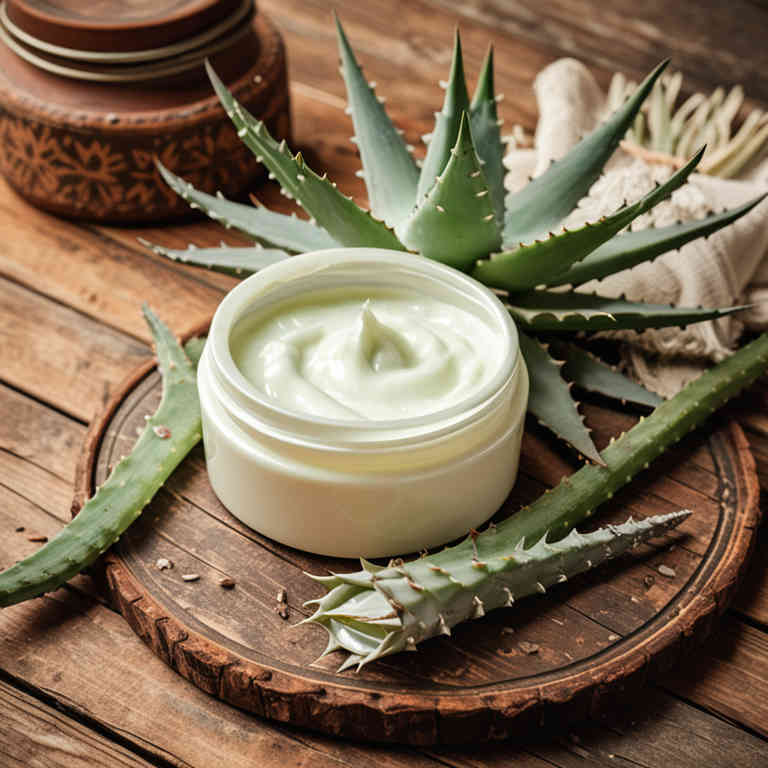Aloe barbadensis cream for medicinal use

Aloe barbadensis cream is a topical preparation made from the gel extracted from the leaves of the Aloe barbadensis plant, commonly known as aloe vera.
It is widely used in herbalism for its soothing and healing properties, particularly for skin conditions such as burns, eczema, and psoriasis. The cream contains polysaccharides, enzymes, and antioxidants that help reduce inflammation and promote skin regeneration. In traditional herbal practices, it is applied directly to the affected area to alleviate discomfort and support the skin’s natural healing process.
Aloe barbadensis cream is valued for its gentle yet effective approach to skin care and treatment.
Uses
Aloe barbadensis cream has been used to treat skin conditions and promote healing for centuries.
Historically, it was used in ancient Egypt for its soothing and moisturizing properties, often applied to the skin of pharaohs and workers. In traditional medicine, it has been valued for its ability to reduce inflammation and aid in the healing of burns, wounds, and skin irritations. Modern uses include its incorporation into topical treatments for eczema, psoriasis, and as a natural moisturizer.
Today, it is widely used in skincare products due to its hydrating and anti-inflammatory benefits.
Benefits
Aloe barbadensis cream has health benefits such as soothing skin irritations, reducing inflammation, and promoting wound healing.
It contains compounds like polysaccharides and enzymes that help repair damaged skin tissue. This cream is also known for its hydrating properties, making it effective for treating dryness and improving skin elasticity. Its anti-inflammatory and antioxidant properties may help alleviate conditions like eczema and psoriasis.
Aloe barbadensis cream is a natural remedy that supports overall skin health and can be used as part of a daily skincare routine.
Constituents
Aloe barbadensis cream active constituents include polysaccharides, enzymes, vitamins, minerals, and anthraquinones.
These components contribute to its anti-inflammatory, moisturizing, and wound-healing properties. Polysaccharides help boost the immune system and promote skin regeneration. Enzymes like bradykinase may reduce inflammation and pain.
Vitamins A, C, and E, along with minerals such as zinc and magnesium, support skin health and overall well-being.
Preparation
To make Aloe barbadensis cream, start by selecting a mature Aloe plant and carefully harvesting the gel from the inner leaf.
Allow the gel to sit for a few hours to reduce the latex content, which can cause irritation. In a clean bowl, mix the aloe gel with a carrier oil such as coconut or jojoba oil in a 1:1 ratio. Then, add a few drops of vitamin E oil to preserve the cream and enhance its moisturizing properties.
Finally, blend the mixture thoroughly until smooth and store it in a cool, dark place for optimal freshness.
Side Effects
Aloe barbadensis cream may lead to gastrointestinal discomfort, skin irritation, or allergic reactions in some individuals.
It is commonly used for its soothing properties on the skin, particularly for burns, sunburns, and minor skin irritations. However, prolonged use or application on open wounds may cause dependency or delay healing. Some people may experience nausea, vomiting, or diarrhea if ingested, though it is typically applied topically.
It is important to consult a healthcare professional before using this preparation, especially for those with sensitive skin or pre-existing medical conditions.